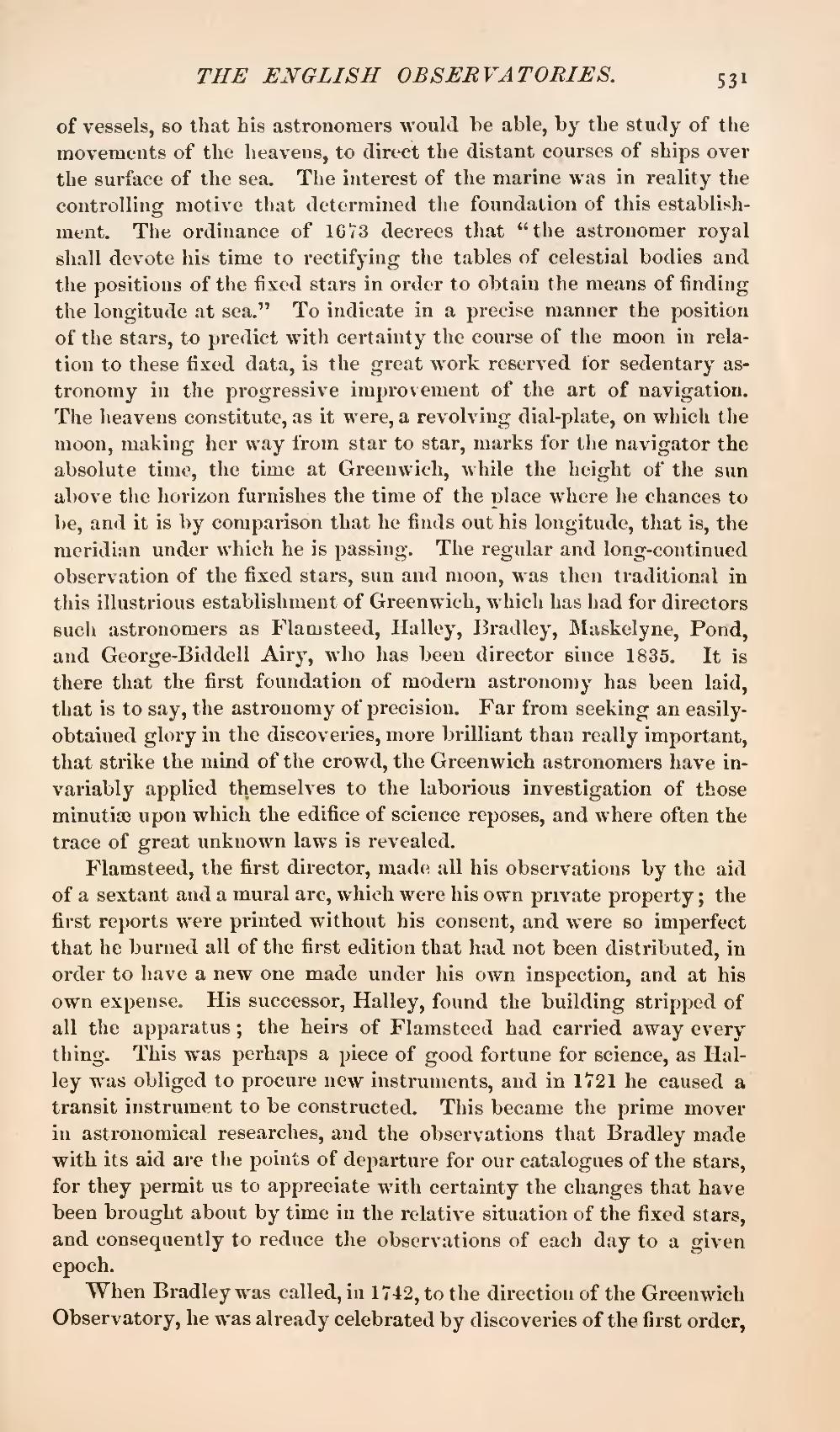of vessels, so that his astronomers would be able, by the study of the movements of the heavens, to direct the distant courses of ships over the surface of the sea. The interest of the marine was in reality the controlling motive that determined the foundation of this establishment. The ordinance of 1673 decrees that "the astronomer royal shall devote his time to rectifying the tables of celestial bodies and the positions of the fixed stars in order to obtain the means of finding the longitude at sea." To indicate in a precise manner the position of the stars, to predict with certainty the course of the moon in relation to these fixed data, is the great work reserved for sedentary astronomy in the progressive improvement of the art of navigation. The heavens constitute, as it were, a revolving dial-plate, on which the moon, making her way from star to star, marks for the navigator the absolute time, the time at Greenwich, while the height of the sun above the horizon furnishes the time of the place where he chances to be, and it is by comparison that he finds out his longitude, that is, the meridian under which he is passing. The regular and long-continued observation of the fixed stars, sun and moon, was then traditional in this illustrious establishment of Greenwich, which has had for directors such astronomers as Flamsteed, Halley, Bradley, Maskelyne, Pond, and George-Biddell Airy, who has been director since 1835. It is there that the first foundation of modern astronomy has been laid, that is to say, the astronomy of precision. Far from seeking an easily-obtained glory in the discoveries, more brilliant than really important, that strike the mind of the crowd, the Greenwich astronomers have invariably applied themselves to the laborious investigation of those minutiæ upon which the edifice of science reposes, and where often the trace of great unknown laws is revealed.
Flamsteed, the first director, made all his observations by the aid of a sextant and a mural arc, which were his own private property; the first reports were printed without his consent, and were so imperfect that he burned all of the first edition that had not been distributed, in order to have a new one made under his own inspection, and at his own expense. His successor, Halley, found the building stripped of all the apparatus; the heirs of Flamsteed had carried away every thing. This was perhaps a piece of good fortune for science, as Halley was obliged to procure new instruments, and in 1721 he caused a transit instrument to be constructed. This became the prime mover in astronomical researches, and the observations that Bradley made with its aid are the points of departure for our catalogues of the stars, for they permit us to appreciate with certainty the changes that have been brought about by time in the relative situation of the fixed stars, and consequently to reduce the observations of each day to a given epoch.
When Bradley was called, in 1742, to the direction of the Greenwich Observatory, he was already celebrated by discoveries of the first order,
